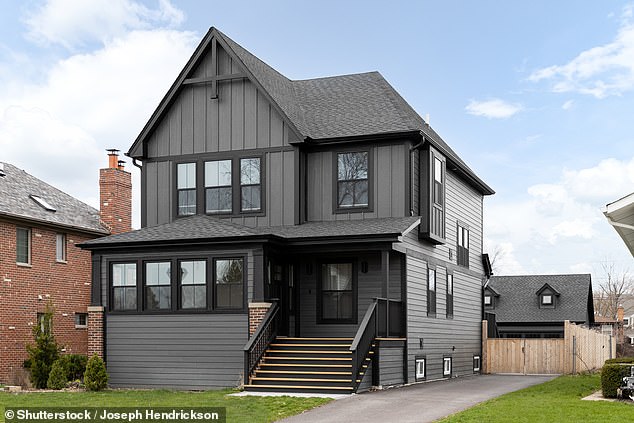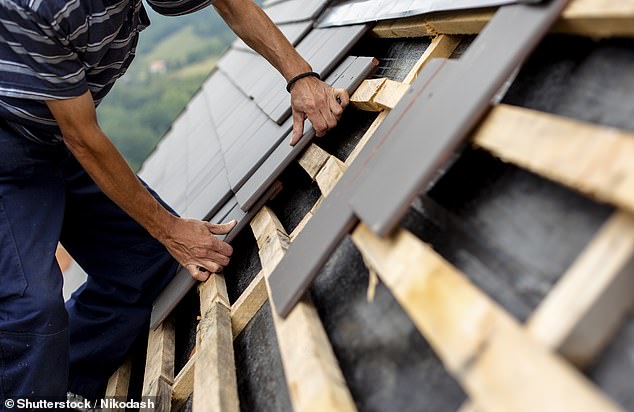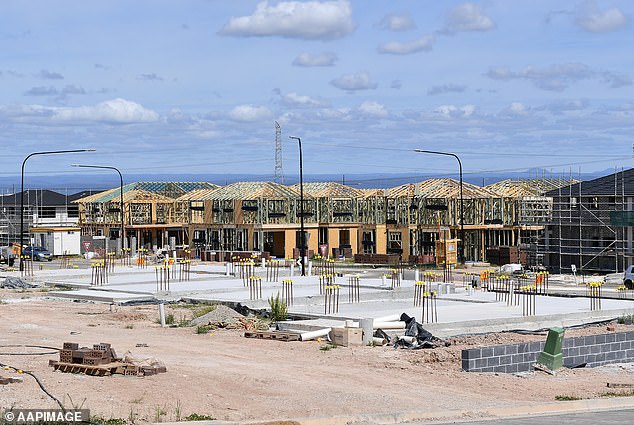Why building experts want this popular home design banned across Australia
A home design trend that has grown in popularity in recent years is facing calls for a ban because it increases home heating, environmental concerns and energy bills.
Dark, often black-colored roofs have increased in Australian cities after being regularly featured on television shows such as The Block and in design catalogues.
Sam Austin, who was named NSW’s Young Planner of the Year, said poor design choices made during the construction of developments meant residents were now living on dangerous urban heat islands where temperatures were higher than nearby areas .
In parts of western Sydney, summer temperatures were 10 to 12 degrees warmer than the rest of Sydney, he said, with dark roofs partially absorbing the heat.
Mr Austin said in a video on social media that “these brand new, identical homes being built across the country” were a mistake.
A home design trend that has grown in popularity in recent years is facing calls for a ban because it increases home heating, environmental concerns and energy bills. A female architect is depicted
“Most of these houses have black roofs and a small yard without room for a tree,” he said.
He said black roofs were purely a “decorative choice” but were in fact at least six degrees warmer than a white roof.
The planner is certainly not the only one who points out the costs for energy bills and the environment of the trend of black roofs on houses.
One state taking the problem very seriously is South Australia, where dark roofs have been banned on all future homes in the Playford Alive urban renewal project in Adelaide’s northern suburbs.
When completed, the $1 billion project in Munno Para will house about 40,000 people.
SA Housing and Urban Development Minister Nick Champion said most of the houses built here to date have had dark-coloured roofs, but dark roofs would be banned from all future phases of the project.
“Encouraging the use of light-colored roofs in home designs helps reduce temperature fluctuations in the home – reducing electricity bills and minimizing the carbon footprint associated with traditional building practices,” he said.
Mr Champion said it was crucial to make these changes now to reduce the potential impacts of urban heat islands.
A report from Seed Consulting found that homes in Adelaide’s northern suburbs with light-colored roofs were 4.3 degrees cooler on an average day than homes with dark roofs.
Janine Strachan, CEO of the Insulation Council of Australia and New Zealand, welcomed the South Australian government’s decision.
“This initiative of light-colored roofs, in combination with roof blankets and ceiling insulation, will significantly improve energy efficiency and comfort in these homes,” she said. news.com.au.
Kym Morgan from the Master Builders Association also supports what the SA government is doing.

Dark, often black colored roofs have increased in Australian cities after being regularly featured on TV shows such as The Block. An almost entirely black house is depicted
‘Light-colored roofing simply makes sense, especially in the north, where it gets warmer.
“It leads to significantly cooler homes and that ultimately means less time running air conditioners and lower energy bills.
“It also means cooler suburbs as consumers adopt lighter roofs en masse,” he said.
Mr Austin said the trend for black roofs on new-build homes has been long-standing in western Sydney and the outer edges of other cities such as Melbourne and Adelaide.
“About 15 years ago, having a dark-colored roof became very popular,” he said.
‘They look stylish and modern, so people loved them. The problem is that this is a 150 square meter area that is in the sun all day and attracts and absorbs enormous amounts of heat… Just about every roof in western Sydney is black.”
The NSW state government had planned to adjust building standards to help reduce temperatures in homes, but this has been postponed until at least May.
Planning Minister Paul Scully said the cost impact on new builds during a housing and cost crisis was behind the decision.
When Mr Scully announced the postponement, Associate Professor Sebastian Pfautsch of Western Sydney University said it would leave people vulnerable to Australia’s ‘silent killer’.

A trader is shown laying black slates on the roof of a new construction project

The trend for black roofs on new build homes has been around for a long time in Sydney’s west and the outskirts of other cities such as Melbourne and Adelaide
“They have effectively thrown the tools they developed to combat urban overheating into the gutter,” he said News Corp.
‘It is common knowledge that heat in Australia is the silent killer, claiming more lives than the victims of all other natural disasters combined.
‘All credible projections point to more heat and Western Sydney has been the hottest place on earth twice in the recent past.
“The government is knowingly leaving people in western Sydney vulnerable to heat,” said the professor, who has called for a “complete” ban on dark roofs across Australia.
